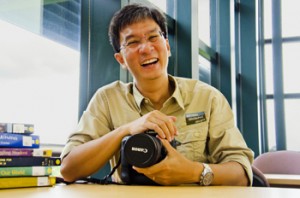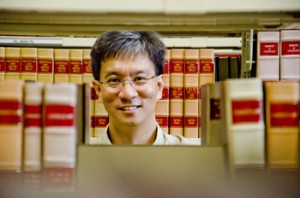Why Singapore’s English Teachers Should Embrace Singlish, Not Fight It
Is it time for Singaporean educators to embrace Singlish as a legitimate learning tool? What the Research […]
Read More
Assessment is part of every teacher’s job. But there’s more to it than just finding out how much learning has taken place. Dr Jonathan Goh provides us with a broader perspective of assessment.

“Why is assessment needed?” asks Jonathan Goh, who is Associate Professor and Associate Dean (Research Support) in the Office of Education Research.
“Knowing how to do it is crucial to helping us know how well we have taught and how well the students have learned in school,” he says. “It is paramount that teachers know how to assess students properly.”
Proper assessment will let teachers have a clear picture of their students’ true abilities and how much they have progressed over time. “There are, however, a lot of issues that teachers need to be aware of,” adds Jonathan.
He guides us through the basics of assessment that every teacher must know.
If we think of teaching and learning visually as a triangle, made up of curriculum, pedagogy and assessment, it often looks like a lop-sided one, notes Jonathan. This is because assessment is often given less attention than the other two components.
– Jonathan Goh, Office of Education Research
“Part of the reason, I suspect, is that people fear numbers,” he says. “They think of it as statistics. As soon as you mention Means and Standard Deviations, they get really uncomfortable! Well, we need to understand that numbers are just numerical representations of qualitative meanings.”
Assessment does indeed involve statistics. But it’s not all about the numbers, as some teachers may fear.
More importantly, Jonathan asks us to consider these: What is assessment? Why do we need it? And how do we know how much our students have learned based on their test results?
Many people see assessment primarily as a way to evaluate skills or knowledge of our students. Jonathan believes assessment can do more than that.
“For a start, it’s an opportunity for enhancing knowledge and skills through various modes of assessment, for instance, through projects, tests, assignments and presentations.”
He lists the three key issues of assessment that teachers need to think about:
To start things off, teachers should sit down together to draw up a curriculum plan. Almost like drawing up a map, they need to ask themselves what they want to achieve with the assessment.
They then need to align the assessment with the curriculum. Looking at the curriculum, they then decide on the spread of topics and difficulty levels that should be covered, and also what constructs they’re really trying to test. All these would also help them in assessing the validity of their test.
“We can measure almost anything meaningfully” says Jonathan. “We just need to ‘unpack’ what (the variable) we are trying to measure, and ask questions on what we want to measure. In so doing, it will really help us better understand what we are trying to measure.”
“Tests questions should not be convoluted,” cautions Jonathan. “We should avoid words that are misleading or vocabulary that the students do not even understand.”
But tests shouldn’t be too easy either.
“You must have sufficient items and they should vary in terms of difficulty levels so that you have a good idea how the child is performing,” he advises. Don’t be afraid to “have questions that are difficult to really ‘stretch’ them”. Only then can you know their true ability.
If we remember that the aim is to evaluate and enhance knowledge, we can develop test questions that enable further learning.
When it comes to interpreting results, invariably, the bell curve gets mentioned.
It does serve a purpose, says Jonathan. However, teachers need to understand three basic statistical concepts (Mean, Standard Deviations and Standard Errors) to better understand how their students have performed.
Without a good grasp of these concepts, teachers may erroneously think that students are underperforming when their marks fall below the Mean, or celebrate when the class Mean for a particular subject is 80 out of 100.
Interpretation of test results gets more complicated when we make comparisons, either across time or levels, or between different students.
The scores alone do not tell us the full story. A student who scored 85 marks in Test 1 and then 75 marks in Test 2 may seem to be falling behind. But perhaps Test 2 was much harder than the first test.

Grades do matter, especially in high-stakes national exams, but educators also place much emphasis on formative assessment.
“If you think about it, assessment is mainly formative because it’s developmental,” notes Jonathan. “Formative assessment is useful for both teachers and students in modifying their practices to improve learning, often through qualitative feedback.”
Assessment reveals more than how much the students know. “It’s also for us as teachers, how we’re seeing growth and seeing how the students are learning the concepts we’re teaching.”
Assessment benefits not just students. It’s also an opportunity for teachers to improve on their own pedagogies.
“We may look at the students’ performances and reflect on how we teach. Then we adjust accordingly to make sure that these concepts are well understood by the students.”
– Jonathan on why formative assessment is needed
With the focus shifting towards 21st century competencies, the challenge for teachers today is not just to impart knowledge, but to create opportunities for students to show how well they have understood the concepts.
Seen in this broader perspective, assessment can be formative for both students and teachers. Jonathan certainly thinks so.
“If teachers can see assessment as part of the whole teaching–learning process and continue to improve their assessment practices, it would certainly take our education system to new heights and the teachers to a new level of professionalism.”